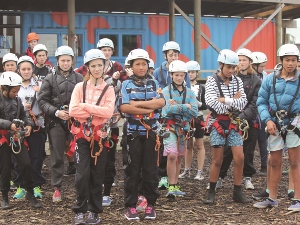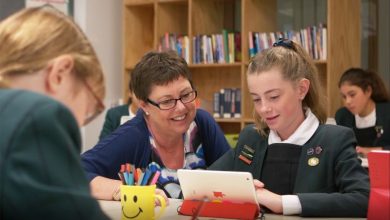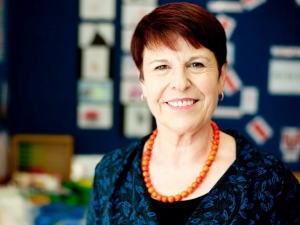Adolescent complexity a challenge for teachers

 It is interesting that when one is asked to give one’s personal view on any subject it usually results in the need to take stock and reflect on what you are actually doing and what you firmly believe.
It is interesting that when one is asked to give one’s personal view on any subject it usually results in the need to take stock and reflect on what you are actually doing and what you firmly believe.
In 1974, under pressure from my parents to ‘find a job’ I embarked on my ‘teacher training’ journey, which I envisaged being a reasonably short one. Three years’ training, a couple of years to clear my bond and then I would cut loose into some other unknown field or occupation. I wasn’t driven – as many young teachers respond today – because of my desire to ‘make a difference’. Quite frankly, the option of selling insurance and wandering around in a suit fell short of the mark – and training to teach had the edge.
I have no doubt that I chose the best career and every change, challenge, teacher, student and whanau member from town and country has made it so. As the principal of Ilminster Intermediate for the past 21 years I have totally supported, seen the evidence of and believed in the ‘intermediate concept’ as did the father of the modern education system in the 1940s & 50s – Clarence Beeby. It was he who wrote the egalitarian creed espoused by Prime Minister Peter Fraser, and he dedicated his life to fulfilling it.
“Every person, whatever the level of their academic ability, whether they be rich or poor, whether they live in town or country, has the right, as a citizen, to a free education of a kind for which they are best suited and to the fullest extent of their powers.”
When you consider his words and look at why he established Intermediates, you have to admire the man for his passion and vision. The unfortunate part is we haven’t always been graced with others in his position that had the understanding and beliefs that he had.
Like you I have observed many politicians and Ministry personnel, who think introducing or legislating change seals their status because they have left their mark. Sadly there have been more than marks left on education, some of them detrimental to the richness and reality of learning.
Beeby recognised that those students about to embark on the developmental stage of young adolescence faced a number of potential risks and that if they were grouped together then there was opportunity for each Intermediate to assist every student to navigate their way through the potential minefield! Likewise, intermediate-aged students were also very ready to broaden their horizons, and specialist areas like the tech arts were introduced along with specialisation teaching.
A challenge for every Intermediate is to ensure their teachers understand the complexity of young adolescent development. It is widely recognised that between the ages of 10 and 14 the young adolescent grows and develops more rapidly than during any other developmental stage except for infancy. This means they can have an acute, sometimes painful, self-awareness of their growing process. These changes then have enormous implications for learning.
This is one of the reasons why our school in 2002 introduced a ‘strength based centre approach’. We needed to engage our students by building on what they were good at and interested in and provide them with lots of opportunities to learn to think for themselves.
Whilst Intermediates aren’t always flavour of the month with politicians and we have seen a number disappear over the past 10 years, I firmly believe my intermediate colleagues around the country do a fantastic job providing rich learning environments for what I believe are the most exciting years.
I personally believe that Initial Teacher Education providers have for too long ignored preparing graduates for teaching young adolescents. Understanding the five key areas for young adolescent development (intellectual, social, physical, emotional & psychological and moral) would provide a solid foundation for meeting the needs of these learners. For the middle school student, daily life can be an emotional rollercoaster marked by unpredictable mood swings. Teachers need to be highly skilled to manage these situations daily, plus ensure they differentiate the learning.
As a principal, one of the greatest challenges is to maintain a competitive edge. Through the celebrations, challenges, successes and failures of my 39-year teaching journey I came to realise that ‘the unknown field’ I had been looking for came with the territory. It wasn’t just in the concept of education – but in the students themselves. Their lives, views and responses to the world around them determined the direction of the school. My one regret, if I have any, is that I didn’t listen and act soon enough. Nevertheless – being a principal is the Best Job in the World!
As John Holt wrote: “True learning – learning that is permanent and useful, that leads to intelligent action and further learning – can arise only out of the experience, interests and concerns of the learner.”
I would not be so presumptuous to speak on behalf of my Intermediate colleagues but I am sure they would agree, we certainly play an important role in the total New Zealand education system.
Leading is more about ‘doing it!’ – Peter Ferris, principal of Ilminster Intermediate









